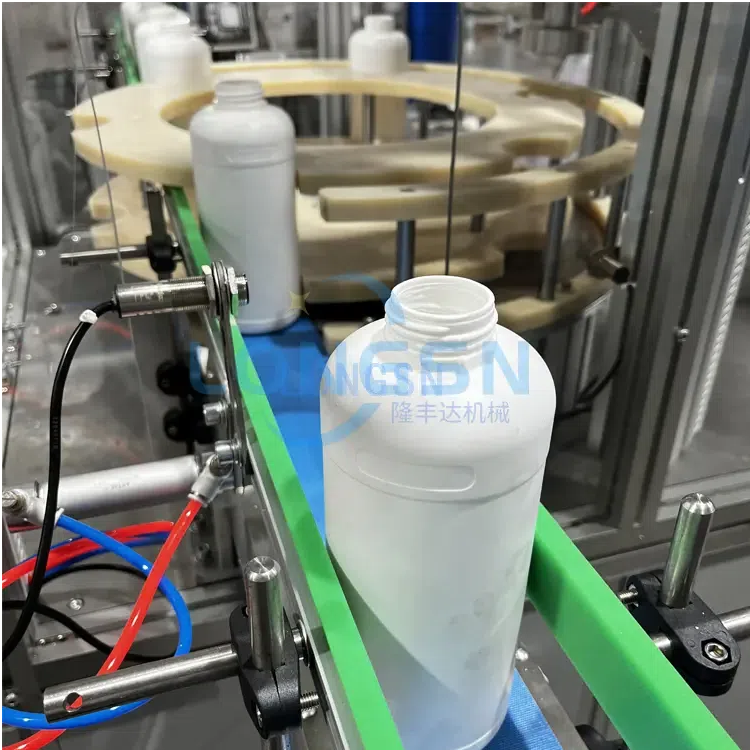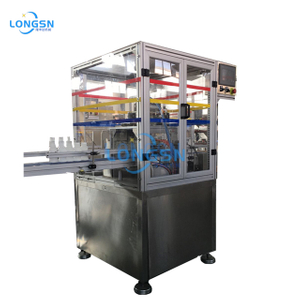Efficient production lines depend not just on high-quality equipment but also on the way machines are maintained and operated. For facilities handling food, beverage, or pharmaceutical bottles, a reliable Bottle Neck Cutting Machine ensures that containers are trimmed accurately, preventing downstream sealing issues and potential recalls. Zhangjiagang Longsn Machine Co., Ltd., a leading manufacturer of bottle packaging equipment, designs machines that combine precision engineering with service-friendly features, allowing operators to maintain throughput while keeping maintenance requirements manageable. This guide walks operations teams through essential daily checks, common issues, preventive maintenance schedules, and strategies for minimizing downtime, while highlighting practical tips to enhance both machine longevity and product quality.
Pre-Shift Checks Every Operator Should Run
Before starting a production run, operators must perform a set of pre-shift inspections to ensure that the Bottle Neck Cutting Machine is ready for reliable operation. These checks prevent minor issues from escalating into costly downtime and help maintain consistent product quality across shifts.
Knife Condition, Alignment, Chuck/Fixture Checks, Air Supply
The cutting knife is the heart of the machine. Operators should examine the blade for wear, nicks, or dull edges, replacing it if necessary. Alignment of the knife relative to the bottle neck is critical for consistent trimming. Inspect the chuck or fixture to make sure bottles are held securely and evenly, avoiding miscuts or uneven trims. Additionally, verify that the air supply maintains the proper pressure and is free from moisture or debris, as pneumatic components rely on clean, steady airflow. Operators may also check lubrication points and ensure sensors are clean and properly connected. These pre-shift steps typically take only a few minutes but can prevent significant production interruptions, saving both time and resources.
Common Faults, Root Causes, and Quick Fixes
Even with careful pre-shift checks, occasional faults may arise. Understanding their causes and applying immediate corrective measures ensures minimal impact on production.
Miscuts, Inconsistent Trims, Jammed Chaff, False Leak Alarms
Miscuts often occur when knives are dull, misaligned, or when bottles are not seated properly. Inconsistent trims may indicate uneven bottle feeding or worn fixtures. Jammed chaff, small cut pieces stuck in the machine, can slow the line and even damage moving components. False leak alarms may stem from minor debris or sensor misreadings rather than actual defects. Operators should inspect knives, fixtures, and sensors, removing any blockages and adjusting alignment. In addition, monitoring the first few bottles after setup allows operators to identify issues before full-scale production begins, reducing waste and preventing downstream problems.
Recommended Immediate Corrective Steps and When to Stop the Line
For minor miscuts or sensor alerts, operators can usually adjust knife position or clean sensors without halting production. However, repeated misalignment, severe jams, or erratic machine behavior should trigger a line stop. Collecting error codes, taking photos of affected bottles, and logging events allows for more efficient troubleshooting and communication with technical support if needed. Operators should also document the corrective steps taken, which helps create a reference for recurring issues and contributes to continuous improvement. Knowing when to escalate prevents minor faults from causing major disruptions and supports a proactive maintenance culture.

Preventive Maintenance Schedule
A structured maintenance plan extends machine life and keeps production stable.
Lubrication Points, Servo Recalibration, Spare-Parts Inventory
Weekly maintenance typically includes lubrication of moving parts and inspection of key mechanical components. Monthly checks may involve recalibration of servo motors, tightening fasteners, and verifying sensor accuracy. Quarterly tasks often cover more extensive inspection, such as checking belts, replacing worn components, and updating spare parts inventory to ensure critical items are always on hand. By keeping a log of maintenance activities, operations teams can track trends in wear and identify components approaching end-of-life, reducing the risk of unexpected breakdowns. Maintaining a routine prevents unexpected breakdowns and keeps the Bottle Neck Cutting Machine operating at peak performance.
Low-Maintenance Design Features Buyers Should Ask For
Modern machines often integrate features that reduce maintenance frequency, such as self-aligning chucks, sealed knife assemblies, and remote monitoring capabilities. These features reduce service time, minimize downtime, and simplify routine inspections. Additionally, ergonomic design elements, such as easily accessible components and tool-free adjustments, further enhance operational efficiency. Buyers evaluating new equipment should consider these design elements, which are incorporated in Zhangjiagang Longsn Machine Co., Ltd.’s bottle packaging lines, simplifying long-term operations while reducing the learning curve for operators.
Spare Parts & What to Keep in Stock
Having the right spare parts on hand is essential for fast recovery when faults occur.
Knives, O-Rings, Sensors, Servo Fuses, Belts
Operators should maintain an inventory of critical consumables, including replacement knives, O-rings, sensors, fuses for servo systems, and belts. Stocking these items prevents extended line stoppages and ensures that routine replacements or emergency fixes can be completed quickly. Maintaining a clear labeling system and centralized storage for spare parts also reduces retrieval time and helps operators respond to issues promptly.
Working with OEM for Fast Service & Remote Diagnostics
Partnering with the machine manufacturer provides access to expert advice, original spare parts, and remote diagnostics. Many modern Bottle Neck Cutting Machines can be monitored and partially diagnosed remotely, allowing service teams to provide solutions without immediate on-site visits. This approach minimizes downtime and ensures that production remains efficient. Regular communication with OEM support also allows operators to anticipate potential problems based on machine performance trends, which enhances predictive maintenance efforts.
When to Escalate: Red Flags That Require OEM Support
Not all issues can be resolved by operators alone. Recognizing red flags ensures that serious problems are addressed before causing damage or costly delays.
Vibration, Repeated Misalignment, PLC Errors — How to Collect Logs for Support
Excessive vibration, recurring misalignment, or frequent PLC errors indicate underlying mechanical or electrical problems. Operators should stop the machine, record error codes, capture photos or video of the issue, and note environmental conditions such as bottle type, speed, and air pressure. Preparing a detailed log allows OEM technicians to provide precise guidance and replacement instructions quickly. Understanding these red flags also empowers operators to prevent minor issues from escalating into more serious failures.
Conclusion
Proper maintenance and timely troubleshooting are critical for keeping a Bottle Neck Cutting Machine operating at peak efficiency. Zhangjiagang Longsn Machine Co., Ltd. offers precision-engineered machines that are robust, easy to service, and designed for long-term reliability. By following structured pre-shift checks, addressing common faults promptly, adhering to preventive maintenance schedules, and keeping essential spare parts available, operations teams can minimize downtime, maintain high-quality output, and extend machine life. For more details on machine specifications, downloadable preventive maintenance checklists, or to request a spare parts quote, contact us at Zhangjiagang Longsn Machine Co., Ltd. today.

 English
English










